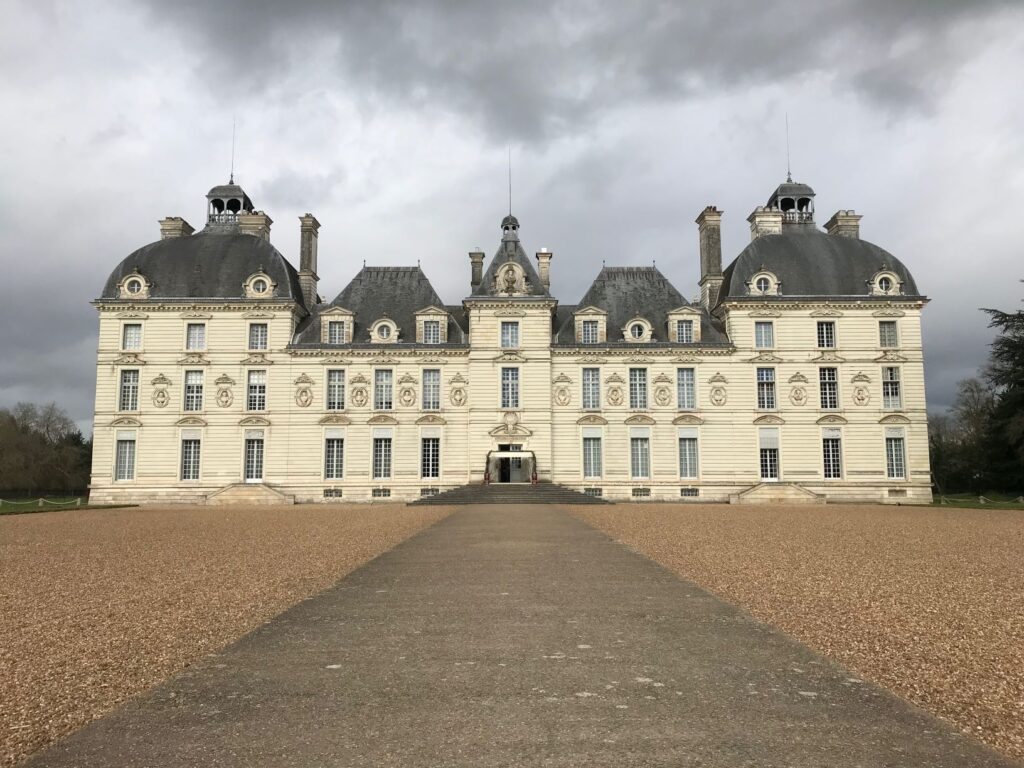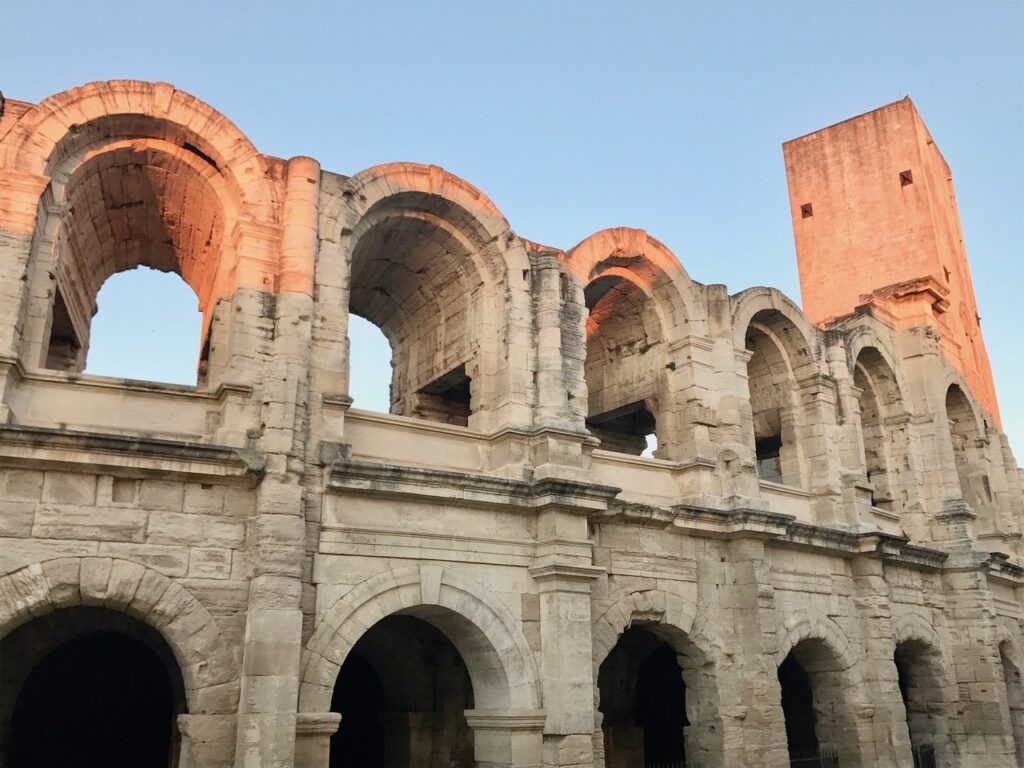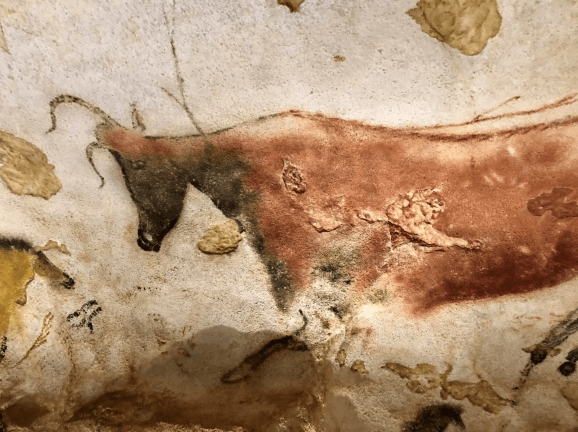Whenever I plan a trip through France, and I’m undecided which places to visit, I find out which destinations are designated UNESCO sites in France—for their significant historic landmarks.
From quiet villages to grand cities, each site reflects a piece of France’s cultural or natural heritage.
I’ll share some of my favourite UNESCO-listed places that I’ve visited—or are high on my list to visit. Whether you’re planning a trip or simply curious, these places are perfect for travellers like me, want to visit places with a bit of history.
This post may contain affiliate links, meaning I get a commission if you decide to purchase something through the links, at no additional cost to you. Read my Affiliate Disclosure.
Iconic UNESCO Sites in France You May Already Know
Some UNESCO Heritage sites in France are famous for good reason—they’re deeply woven into the cultural identity of the country. Here are two you’ve likely heard of, and how I’ve come to appreciate them in a different light.
Banks of the Seine, Paris

I’ve walked along the Seine more times than I can count on my 11 trips to Paris, but it never feels the same twice. The stretch through central Paris—lined with historic bridges, landmarks like Notre-Dame, and the charming bouquinistes—is a UNESCO World Heritage Site for its exceptional urban and architectural harmony. I like to start early in the morning, when the riverfront is still waking up, and let my feet lead the way without a plan.
The Palace and Gardens of Versailles

Versailles can feel overwhelming, especially in peak season. I like to visit in the off-season, and when I feel like I have the Hall of Mirrors and gardens all to myself. The sheer scale of the estate means you could spend the entire day here and still feel like there’s more to explore. I especially like the Queen’s Hamlet—a romantic garden with cottages, a lake, a farm, and a grotto, designed by Marie-Antoinette.
Historic Cities That Tell a Story
Some cities in France feel like they’ve held on to every chapter of their past—and they invite you to slow down and read between the lines. These UNESCO-listed cities offer more than just beautiful facades; they’re places where history lives in the details, from the curve of a cobbled lane to the scent of fresh bread wafting from a centuries-old bakery.
Avignon

I’ll never forget standing beneath the towering walls of the Palais des Papes in Avignon, imagining the time when this city rivalled Rome as the seat of the Catholic Church. The old bridge, half-vanished into the Rhône, adds to its charm. It’s the kind of place where I find myself lingering in shaded squares, listening to church bells echo off the stone.
Lyon

Lyon has layers. And, seeing it is so close to Paris, I know I will make a weekend trip there soon. The Renaissance district of Vieux Lyon is where you will find the Roman amphitheatres near Fourvière. What I love about Lyon is how you can see different periods of history stacked on top of each other, evident in every photo I’ve seen. It’s also one of the best cities to taste your way through time, sounds like my kind of city.
Strasbourg

Strasbourg has long been on my list. Half-French, half-German in spirit, it feels like it has one foot in two worlds. The old town, Grande Île, is a UNESCO site with timber-framed houses, canals, and a cathedral that’s known to be awe-inspiring. This is the kind of city to get lost in, crossing bridges and admiring the storybook views.
Living Cultural Landscapes
In some parts of France, the land itself tells a story—shaped over centuries by human hands in harmony with nature. These UNESCO World Heritage Sites aren’t just scenic; they reflect traditions that are still very much alive. I’ve found these landscapes ideal for slow travel, where walking through a vineyard or cycling past châteaux feels like stepping into the rhythm of daily life.
Champagne (Reims)

I’ll admit, I went for the bubbles—but I stayed for the story. The Champagne Hillsides, Houses, Cellars and Cathedral are UNESCO-listed for how this sparkling wine has been crafted and stored since the 17th century. In Reims, I toured chalk cellars carved deep underground and wandered vineyard trails that rolled out endlessly under the sky. There’s something satisfying about tasting Champagne in the very place it was born.
Loire Valley

The Loire Valley is postcard-pretty, yes—but it’s also a cultural landscape that’s been shaped by centuries of kings, writers, and winemakers. Rather than rushing from château to château, I recommend staying in one village for a few days, exploring by bike and stopping at family-run wineries along the way. The connection between the land and the people here is something you can feel.
Saint-Émilion

Saint-Émilion isn’t just a village—it’s an entire wine-growing region where everything seems to revolve around the vines. I’m dying to visit this medieval town carved into the limestone, and then enjoy a glass of red overlooking the countryside.
Off the Beaten Path Sites Worth Slowing Down For
Not every UNESCO site in France draws crowds—and that’s exactly what makes some of them so special. These places invite you to pause, look a little closer, and appreciate stories that haven’t been polished for the spotlight. I’ve found that the less-travelled sites often offer the best rewards, especially when approached with curiosity and time to linger.
Provins

Tucked away from the usual tourist trails, Provins stole my heart. This medieval town once thrived as a hub for trade fairs, and today its ramparts, watchtowers, and underground tunnels hint at its lively past. I spent a quiet day here, wandering the streets and lingering over a long lunch.
Carcassonne

Carcassonne looks like something out of a medieval dream, and that’s why it’s on my list to visit. The fortified city, with its double walls and fairytale turrets, has been carefully restored. Fellow travel blogger Elisa suggests savouring the local specialty, cassoulet, a slow-cooked casserole dish.
Monuments That Stand the Test of Time
Some places in France feel as if they were built not just to impress—but to last. Whether it’s Roman engineering, medieval devotion, or ancient power on display, these UNESCO sites have endured centuries of wind, water, war, and time.
Pont du Gard

This Roman aqueduct bridge left me speechless—not just for its scale, but for the precision of its design. I walked along the riverbank, admiring how it still stands after nearly two thousand years. It’s one of those places where I didn’t rush to take photos—I just sat in the shade and imagined how they ever built such a thing without modern tools.
Arles

The Roman amphitheatre still hosts performances today, which somehow makes the past feel closer. I didn’t have a chance to stop and see it for myself while visiting the beautiful villages of the Luberon region in the south of France, but I know I will one day. From the baths to the forum, I can’t wait to explore this town.
Mont Saint-Michel

I still can’t believe that after visiting Paris 11 times, I still haven’t been able to see the natural marvel of Mont Saint-Michel rising out of the bay. Part of my hesitation is its isolated location and the crowds who come out in droves to take in the shifting tides.
Natural Wonders and Landscapes
Some UNESCO World Heritage sites in France are as much about the land as they are about the people who shaped it—or were shaped by it. These places invite a deeper connection with nature, history, and time itself. While I haven’t made it to these yet, they’re high on my list for future travels.
Chaîne des Puys

This chain of extinct volcanoes in central France fascinates me. The idea of hiking across ancient craters and lava domes while learning about the geological forces that shaped the region feels like the ultimate mix of science and stillness.
Vézère Valley

Known as the cradle of prehistoric art, the Vézère Valley is home to over a dozen caves with some of the oldest known cave paintings in the world. I’ve always been drawn to places that make you feel small in the best way—and this valley, where early humans left their mark tens of thousands of years ago, seems like the perfect place to feel connected to something timeless.
Final Thoughts
With over 50 UNESCO World Heritage Sites across France, choosing where to go can feel a little overwhelming—especially if you’re drawn to history, landscapes, and culture like I am. What’s helped me is to slow down and ask myself: Do I want to walk through medieval streets? Taste wine where it’s been made for centuries? Stand quietly in a place that’s witnessed thousands of years of human life?
Whether you’re building your itinerary around a few iconic landmarks or seeking out lesser-known gems, let your curiosity guide you—not the pressure to check things off a list.
If you love exploring Europe thoughtfully and want more slow travel tips, cultural insights, and destination ideas like these, I’d love for you to join my weekly newsletter. It’s where I share personal stories, hidden finds, and inspiration for your next meaningful trip.


